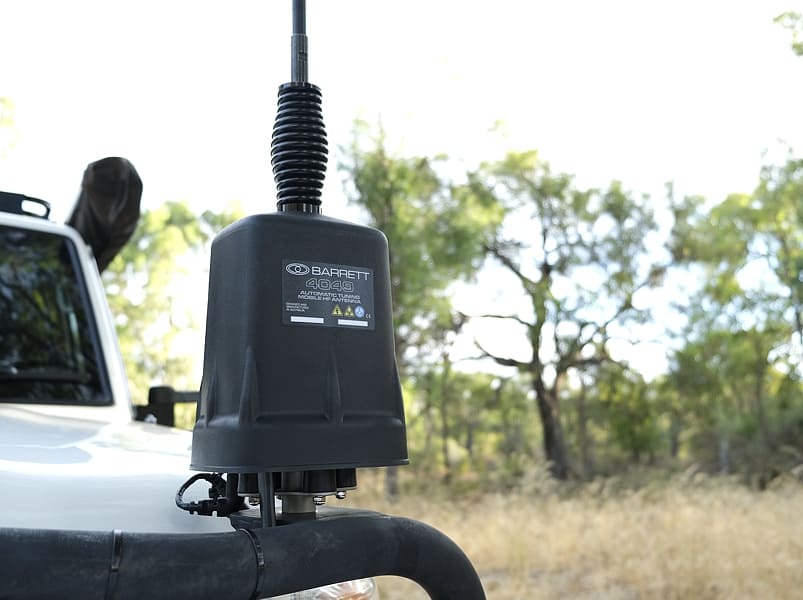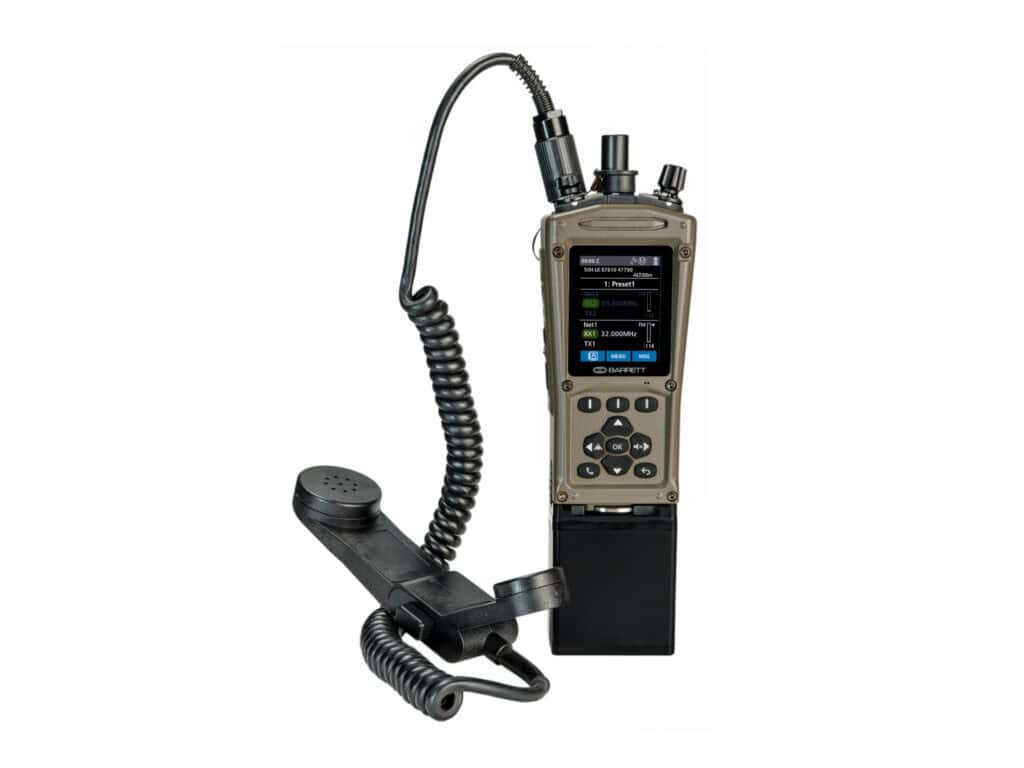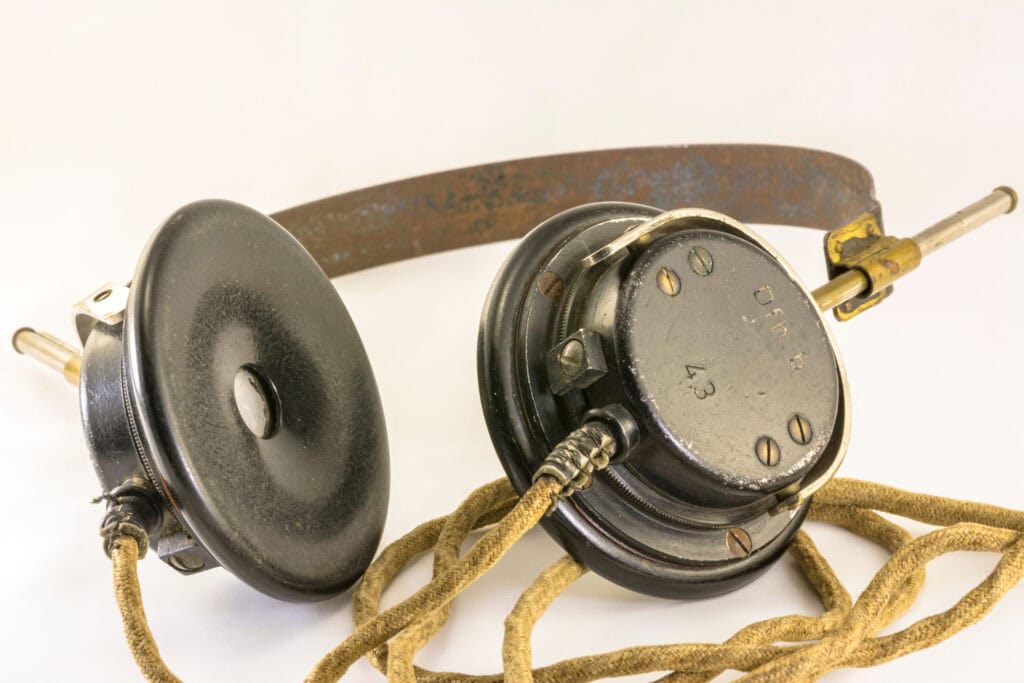Antenna Series Part 4: How do antennas relate to radio frequency?
Antenna Series Part 4: How do antennas relate to radio frequency?

An explanation of how antennas relate to radio frequency and a list of different types of radio antennas.
Antennas play a vital role in radio communication, enabling the transmission and reception of radio waves. Understanding how antennas work and their relationship to radio frequencies is crucial in optimising wireless communication systems. This article explores the fundamentals of antennas and their connection to radio frequency.
How do antennas broadcast radio frequencies?
Antennas play a vital role in broadcasting radio frequencies by converting electrical signals into electromagnetic waves and vice versa. This is how they work:
At its core, an antenna is an interface between a transmitter or receiver and the airwaves. It facilitates the conversion of electrical signals into electromagnetic waves, which are then transmitted through space. When an electrical current is applied to an antenna, it generates radio waves propagating into the surrounding environment.
On the other hand, radio waves are a form of electromagnetic radiation characterised by oscillating electric and magnetic fields. These waves carry information and travel at the speed of light. As an antenna receives an electrical current, it translates this energy into radio waves that radiate outwards.
The process of broadcasting radio waves involves the emission of these waves in specific patterns or directions based on the design of the antenna. Factors such as the antenna’s size, shape and other elements influence the emission pattern. By carefully configuring the antenna’s structure, it becomes capable of transmitting radio waves efficiently and effectively.
How do radio frequencies work?
Radio frequencies are essential for wireless communication. They can be categorised into two types: near-field and far-field waves. Near-field waves are concentrated close to the antenna and used for short-range communication, while far-field waves radiate further away and are utilised for long-range communication.
Government authorities carefully allocate and regulate radio frequencies to ensure efficient and interference-free communication. Different frequency bands are assigned for specific purposes and applications. For example, FM radio stations operate within a certain frequency range, while mobile phone networks use different frequency bands.
Understanding radio frequencies helps optimise wireless communication systems by considering factors like distance, obstacles and antenna design. Efficient communication relies on the proper utilisation of antennas and signal-processing techniques.
What are the different types of radio antennas?
Different forms of radio antennas cater to various communication needs. Common types include the dipole, monopole, loop, horn, parabolic, helical, slot, dielectric, patch, phased array, Yagi and log periodic antennas. Each type has its own unique design and functionality. For example, a dipole antenna consists of two conductive elements, while a parabolic antenna uses a curved reflector to focus radio waves.
Understanding the characteristics and operation of these antenna types helps in selecting the most suitable one for a specific application by considering the range, directionality, gain and size requirements. To learn more about the different antenna types and how they can enhance your communication setup, contact Barrett Communications today.







Pingback: buy brand cialis online usa
Pingback: cheap genuine viagra
Pingback: viagra for sale in uk cheap
Pingback: viagra brand coupon
Pingback: cost of 1 viagra pill
Pingback: prices for viagra prescription
Pingback: cialis free trial coupon
Pingback: cheapest cialis 5mg
Pingback: tadalafil 30mg per ml x 30 ml
Pingback: sublingual cialis
Pingback: neurontin pancreas
Pingback: flagyl definicion
Pingback: bactrim education
Pingback: beschwerden tamoxifen
Pingback: pregabalin kidney
Pingback: valacyclovir transmission
Pingback: lisinopril+missed+dose+side effects
Pingback: furosemide nephrocalcinosis
Pingback: metformin wirkungen
Pingback: semaglutide ozempic rybelsus
Pingback: rybelsus 7 mg pret
Pingback: semaglutide for weight loss in non diabetics dosage
Pingback: sleep quality compare increase wake ssri fluoxetine escitalopram fluvoxamine paroxetine
Pingback: can you take cephalexin if allergic to amoxicillin
Pingback: zoloft sexual side effects go away
Pingback: flagyl felleskatalogen
Pingback: olanzapine fluoxetine
Pingback: lexapro for anxiety
Pingback: gabapentin identification
Pingback: what muscle relaxer can i take with cymbalta
Pingback: best viagra tablet price in india
Pingback: over the counter keflex
Pingback: is duloxetine cymbalta
Pingback: ciprofloxacin for cats
Pingback: cephalexin kidney infection
Pingback: bactrim doses
Pingback: how long does it take for side effects of bactrim to go away
Pingback: what does amoxicillin do
Pingback: diltiazem hcl er
Pingback: how long does cozaar stay in your system
Pingback: diclofenac sod dr 75 mg tab
Pingback: ezetimibe pharmacology
Pingback: does flexeril show up on drug tests
Pingback: effexor side effects sexually
Pingback: what are the side effects of depakote
Pingback: alcohol and citalopram
Pingback: is augmentin a penicillin
Pingback: flomax conversion to doxazosin
Pingback: contrave shortage
Pingback: ddavp uremic platelet dysfunction
Pingback: which is better for pain gabapentin or amitriptyline
Pingback: aripiprazole lauroxil vs abilify maintena
Pingback: enteric coated aspirin
Pingback: allopurinol max dose
Pingback: wellbutrin and celexa
Pingback: how long does it take for bupropion to work
Pingback: acarbose formel
Pingback: semaglutide wiki
Pingback: robaxin 750 mg
Pingback: actos engañosos
Pingback: repaglinide eg 1 mg
Pingback: what is protonix for
Pingback: what is the drug remeron used for
Pingback: abilify cost per month
Pingback: xelevia 100mg sitagliptin
Pingback: tamsulosin and psa levels
Pingback: buy ivermectin stromectol
Pingback: voltaren for achilles
Pingback: 25 mg spironolactone for hair loss
Pingback: venlafaxine for headaches
Pingback: what is tizanidine 4mg tablets used for
Pingback: synthroid 62.5
Pingback: sildenafil citrate tablets 100mg
Pingback: how does levitra work
Pingback: 60 mg tadalafil
Pingback: cialis online pills
Pingback: maximum dose of sildenafil per day
Pingback: legitimate online pharmacy tramadol
Pingback: mexico pharmacy advair
Pingback: where to buy levitra online no prescription
Pingback: stromectol pills
Pingback: stromectol ivermectin 3 mg
Pingback: generic sildenafil without a prescription
Pingback: price of ivermectin liquid
Pingback: vardenafil 10mg tablets
Pingback: vardenafil vs cialis
Pingback: ivermectin over the counter uk
Pingback: tadalafil canadian pharmacy online
Pingback: ivermectin pills human
Pingback: ivermectin oral 0 8
Pingback: mint pharmaceuticals tadalafil reviews
Pingback: where can i order viagra online in canada
Pingback: augmentin indications
Pingback: can i take an extra lisinopril if my blood pressure is high
Pingback: will cephalexin treat sinus infection
Pingback: ampicillin resistance and beta lactamase
Pingback: tamoxifen resistant
Pingback: ciprofloxacin side effects
Pingback: how long does keflex stay in your system
Pingback: prednisone and pregnancy
Pingback: modafinil formula
Pingback: amoxil pediatric dose
Pingback: neurontin pricing
Pingback: para que sirve trazodone 50 mg
Pingback: how often to take valacyclovir
Pingback: lyrica anderson birthday
Pingback: how long does it take for doxycycline to work for tooth infection
Pingback: glucophage gluten
Pingback: pakistan pharmacy valium
Pingback: what is vardenafil 20mg
Pingback: buy levitra 20mg tablets
Pingback: is tadalafil a controlled substance
Pingback: how much is viagra per pill